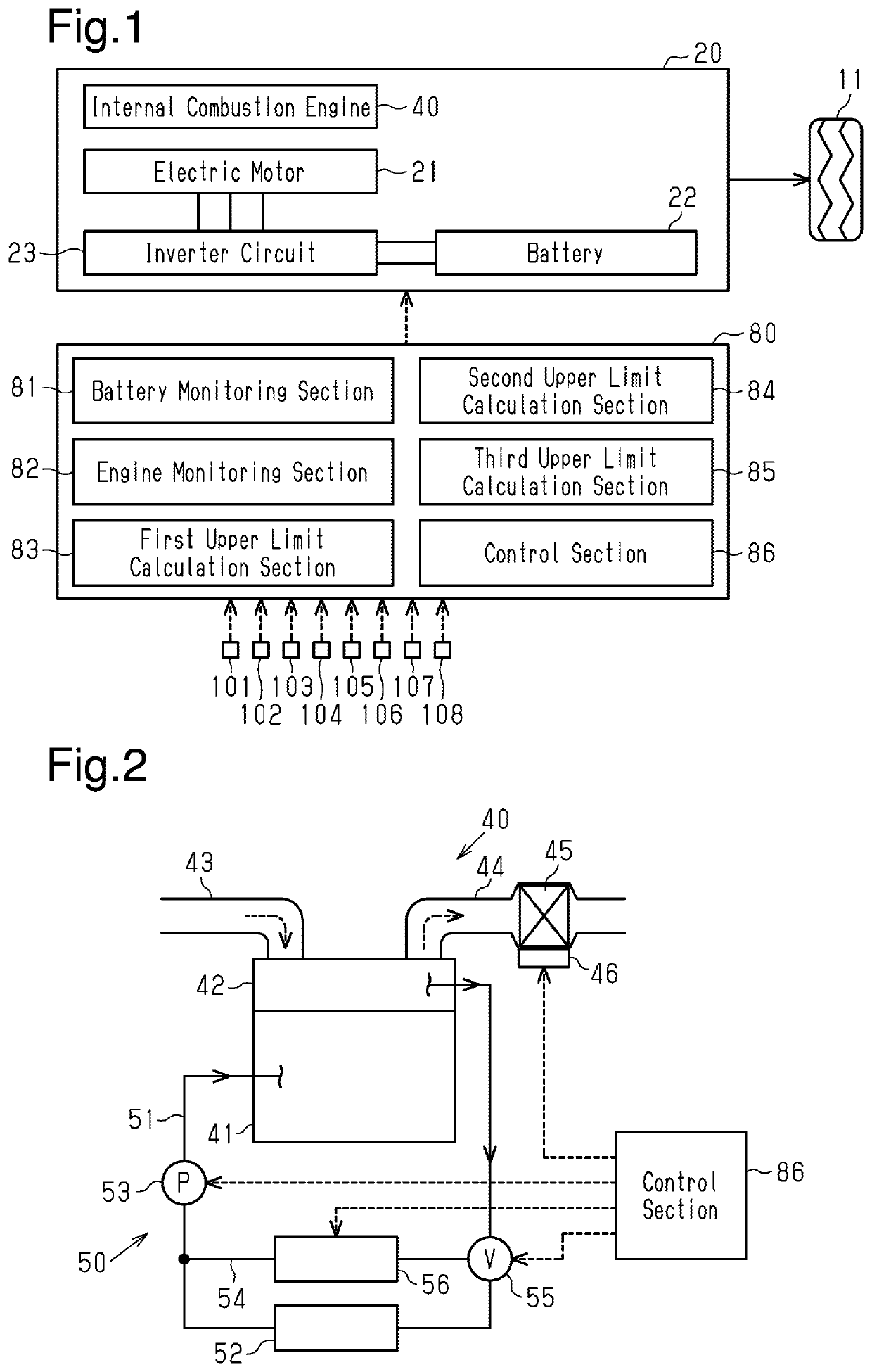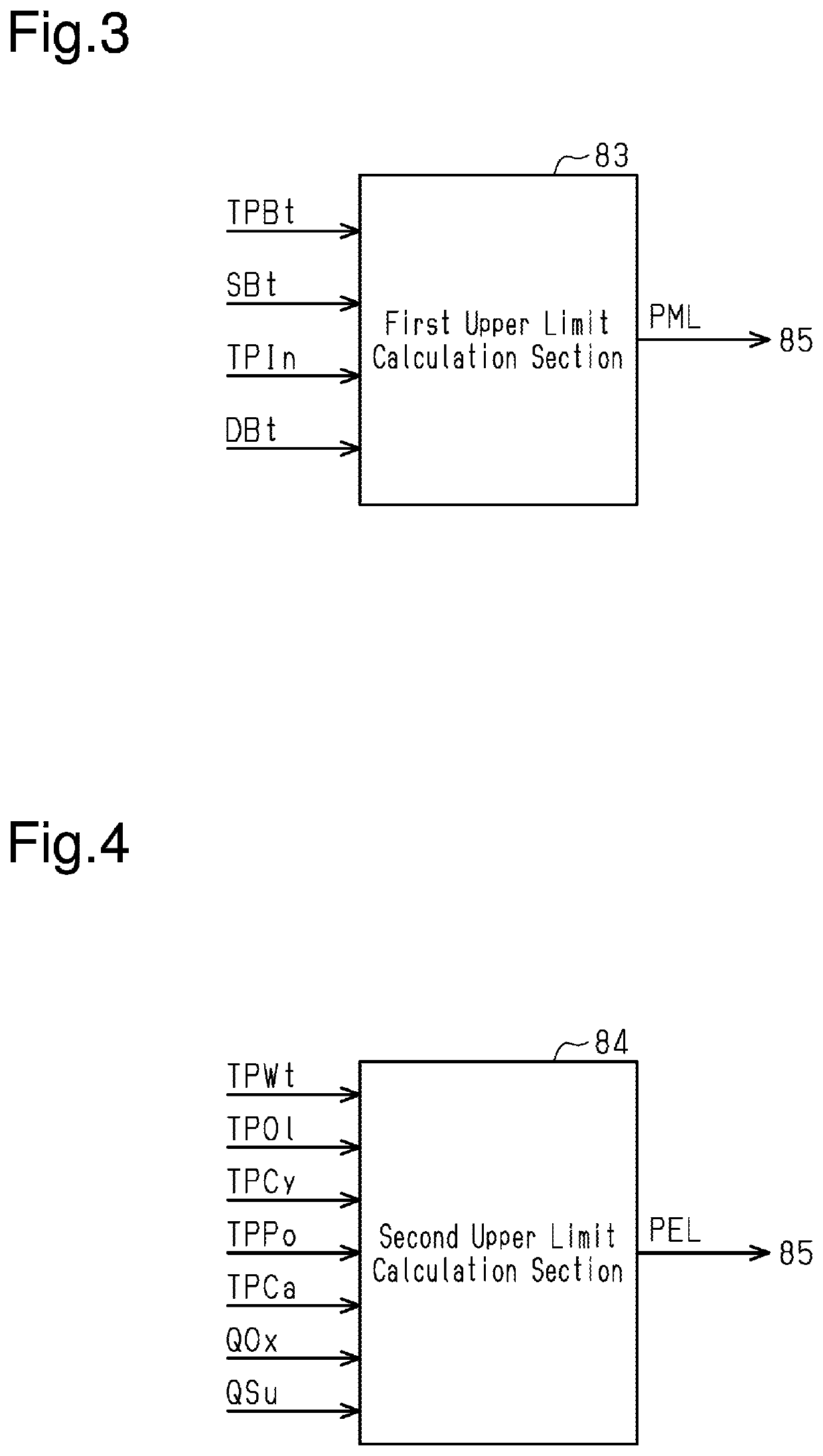Control device and control method for hybrid vehicle
a control device and hybrid technology, applied in the direction of electrical control, exhaust treatment electric control, engine starters, etc., can solve the problems of deteriorating the properties of the exhaust gas of the vehicle, inhibiting the divergence between the requested the actual output of the hybrid system, and high upper limit system output, so as to reduce the temperature of the catalyst, limit the deterioration of the fuel efficiency of the internal combustion engine, and limit the deterioration of the properties of the exhaust gas
- Summary
- Abstract
- Description
- Claims
- Application Information
AI Technical Summary
Benefits of technology
Problems solved by technology
Method used
Image
Examples
first embodiment
[0033]A control device 80 for a hybrid vehicle according to a first embodiment of the present disclosure will be described with reference to FIGS. 1 to 5.
[0034]FIG. 1 shows the control device 80 of the present embodiment and a hybrid system 20 controlled by the control device 80. A vehicle equipped with the hybrid system 20 is a plug-in hybrid vehicle that allows a battery 22 to be charged by a power supply from outside the vehicle.
[0035]The hybrid system 20 includes an electric motor 21 and an internal combustion engine 40 as power sources of the vehicle. That is, the hybrid system 20 is capable of both inputting the output torque of the electric motor 21 to wheels 11 and inputting the output torque of the internal combustion engine 40 to the wheels 11. To cause the electric motor 21 to function as a power source of the vehicle, a direct-current voltage of the battery 22 is converted to an alternating-current voltage by an inverter circuit 23, and the alternating-current voltage is...
second embodiment
[0074]A control device for a hybrid vehicle according to a second embodiment of the present disclosure will now be described with reference to FIG. 6. In the second embodiment, the structure of the engine heating section differs from that of the first embodiment. The differences between the first embodiment and the second embodiment will mainly be discussed in the following description. The same or equivalent components as the first embodiment are given the same reference numerals, and redundant descriptions will be omitted.
[0075]FIG. 6 illustrates the coolant circulation device 50 for the internal combustion engine 40 and a motor cooling device 200. The motor cooling device 200 is a device that circulates the coolant to cool the battery 22 and the inverter circuit 23. The motor cooling device 200 includes a motor coolant circuit 201 and a motor coolant pump 202, which is operated to circulate the coolant in the motor coolant circuit 201 as shown by the arrows in FIG. 6.
[0076]In the...
PUM
 Login to View More
Login to View More Abstract
Description
Claims
Application Information
 Login to View More
Login to View More - R&D
- Intellectual Property
- Life Sciences
- Materials
- Tech Scout
- Unparalleled Data Quality
- Higher Quality Content
- 60% Fewer Hallucinations
Browse by: Latest US Patents, China's latest patents, Technical Efficacy Thesaurus, Application Domain, Technology Topic, Popular Technical Reports.
© 2025 PatSnap. All rights reserved.Legal|Privacy policy|Modern Slavery Act Transparency Statement|Sitemap|About US| Contact US: help@patsnap.com



